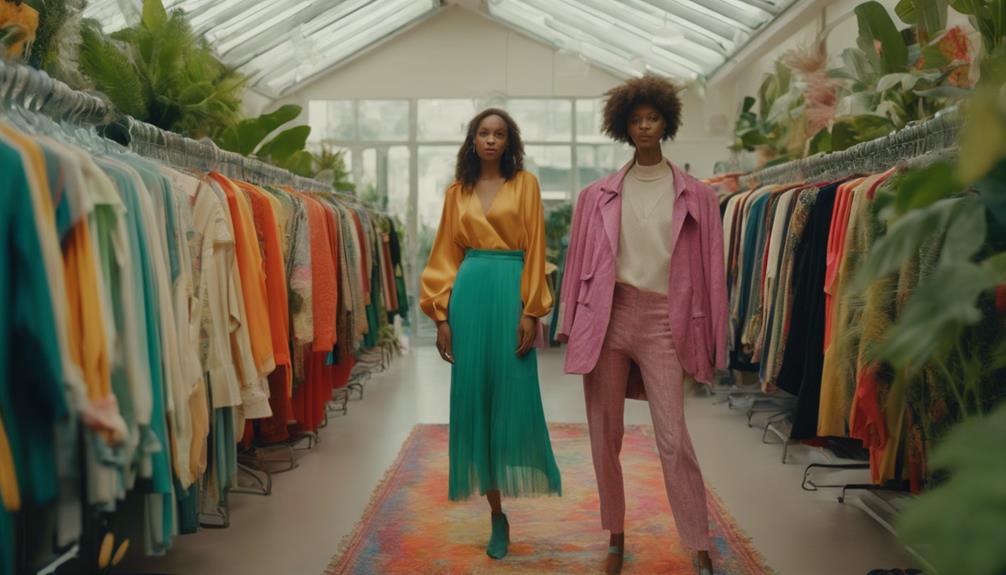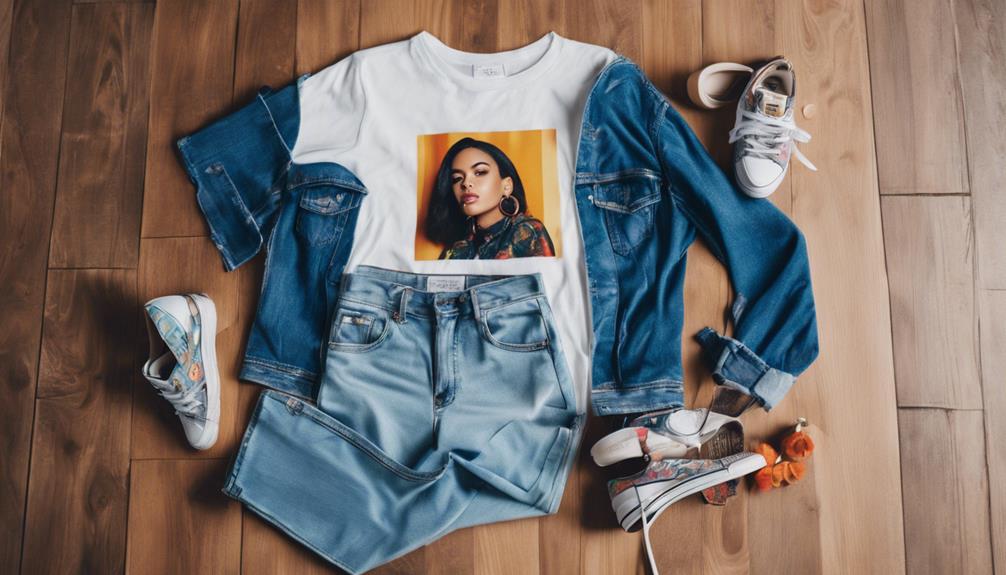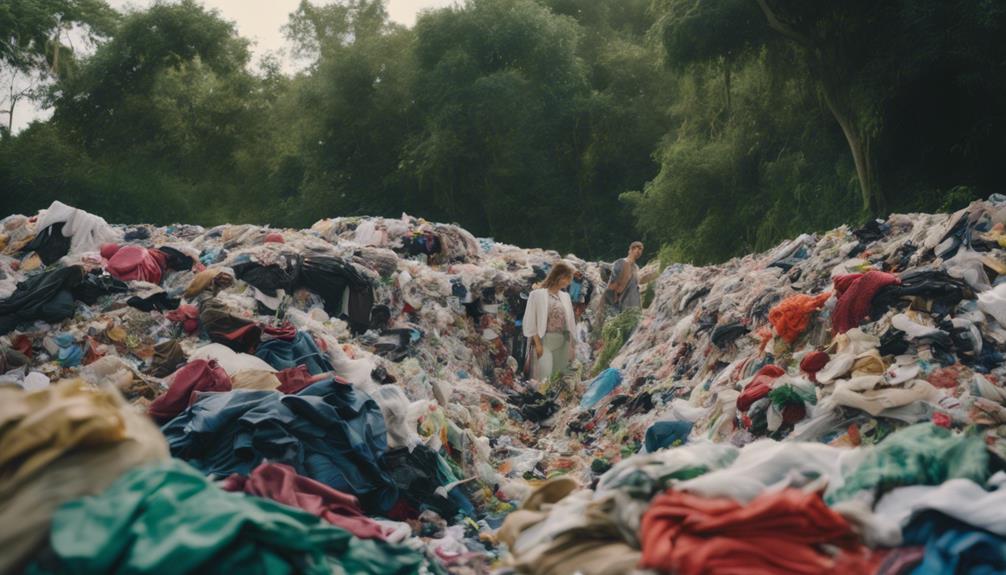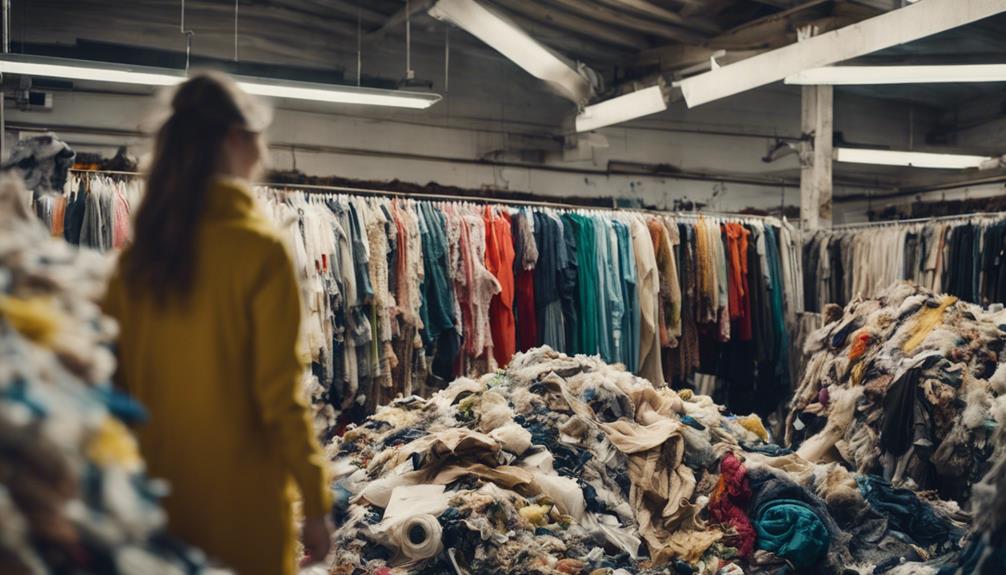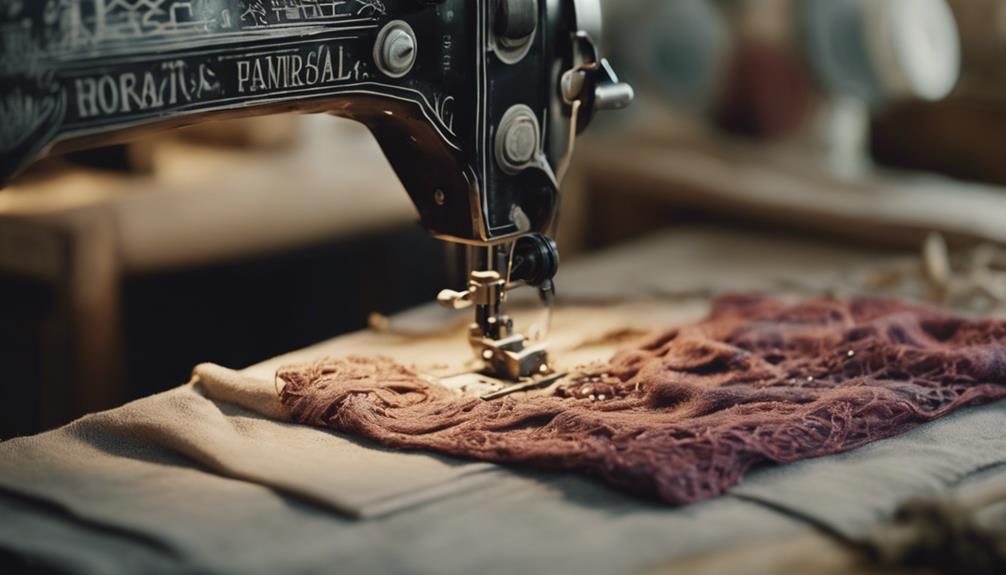You may believe that sustainable fashion is more costly, but that assumption can be deceiving. While ethical clothing often comes with a higher initial price tag, this investment proves to be worthwhile in the long run. Sustainable apparel is made from high-quality materials, which means they are more durable and end up costing less in terms of maintenance. Although fast fashion’s cheap prices may appear appealing, they involve hidden costs such as unethical labor practices and environmental impact. In a world transitioning towards ethical consumption, you may discover that investing in sustainable fashion not only benefits you but also the planet. Stay tuned to discover more insights!
Key Takeaways
- Sustainable fashion often has higher upfront costs due to quality materials and ethical labor practices.
- Higher-quality sustainable garments result in lower long-term spending through cost per wear savings.
- Fast fashion conceals hidden environmental and ethical costs that impact overall pricing.
- Consumers are increasingly willing to pay more for ethical practices and sustainability.
The True Cost of Fashion
When you consider the true cost of fashion, it's clear that fast fashion's cheap price tags often hide significant ethical and environmental consequences.
While you might be tempted by those low prices, fast fashion relies on cheap labor, resulting in garment workers earning mere cents per item. In contrast, sustainable brands focus on ethical fashion, prioritizing fair wages for their workers, which inevitably raises garment prices.
Sustainable fabrics come at a higher cost, with certified options priced around $6 per meter compared to $2 for uncertified varieties. Additionally, sustainable brands typically adopt small-batch production methods to minimize waste, causing their per-unit costs to be higher than fast fashion's bulk production. This means that ethical brands can mark up their prices by 400%-500%, leading to a noticeable difference at retail.
However, investing in higher-quality, sustainable clothing often results in a lower cost per wear over time. These garments tend to last longer than their fast fashion counterparts, which frequently need replacing.
Economic Impact of Fast Fashion
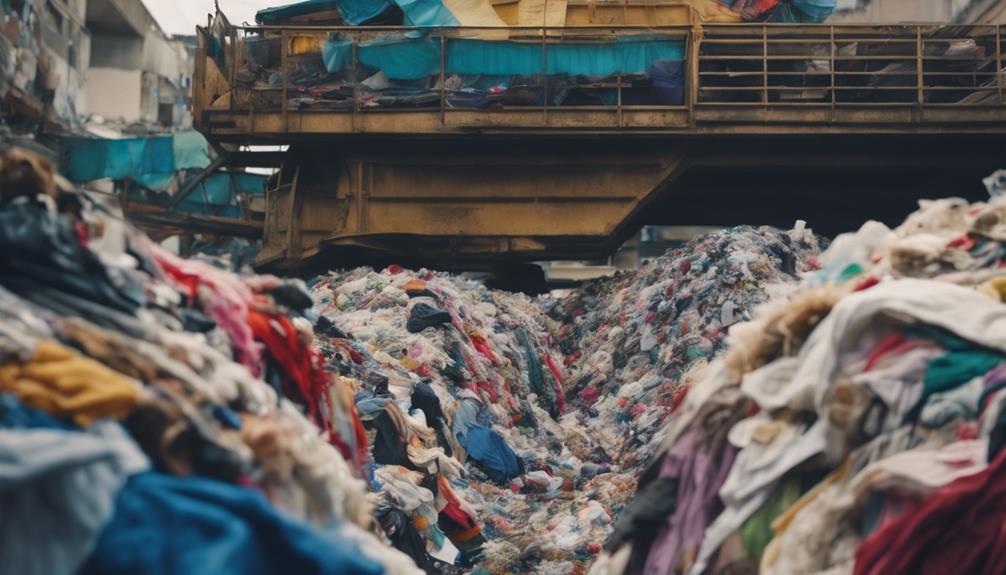
When you consider the economic impact of fast fashion, it's clear that low production costs come at a price.
While you might save money on trendy clothes, the long-term financial benefits of sustainable options can outweigh those initial savings.
It's worth examining how your choices influence not just your wallet, but also the broader economic landscape.
Cost of Production
The cost of production in the fast fashion industry reveals a troubling imbalance, where a significant portion of garment expenses is devoted to fabric, leaving little for ethical wages and quality craftsmanship. You might be surprised to learn that around 70% of garment costs go to fabric alone. This allocation results in low wages for workers and often leads to poor-quality production.
While fast fashion brands enjoy profit margins exceeding 10%, ethical brands face financial challenges due to their commitment to sustainable practices. They produce in smaller quantities to avoid overproduction, which drives up their production costs. In fact, sustainable fabrics like organic cotton can cost 25% more than cheaper synthetic options, influencing the final price of these garments.
Fast fashion's low prices might seem appealing, but they often come at a steep ethical and environmental cost. The hidden expenses of exploiting labor and harming the planet aren't apparent at the checkout but weigh heavily on society.
Ultimately, when you consider the true cost of production, investing in sustainable fashion not only supports ethical practices but also contributes to a more responsible industry.
Long-Term Financial Benefits
Fast fashion's allure of low prices can lead to hidden costs, but investing in sustainable fashion offers long-term financial benefits that often outweigh initial expenses.
While sustainable fashion brands may come with a higher price tag, the investment pays off over time. Instead of buying 70 cheap garments that you'll likely discard after a season, consider purchasing fewer pieces that are ethical and sustainable. These quality items can last much longer, reducing the overall cost per wear.
Fast fashion encourages a cycle of frequent purchases, leading to higher expenses in the long run. In contrast, when you choose sustainable options, you're making a long-term investment in your wardrobe and, ultimately, better for the planet.
As demand for sustainable fashion grows, prices may decrease, making ethical clothing more accessible and economically viable for everyone.
Labor Practices in the Industry
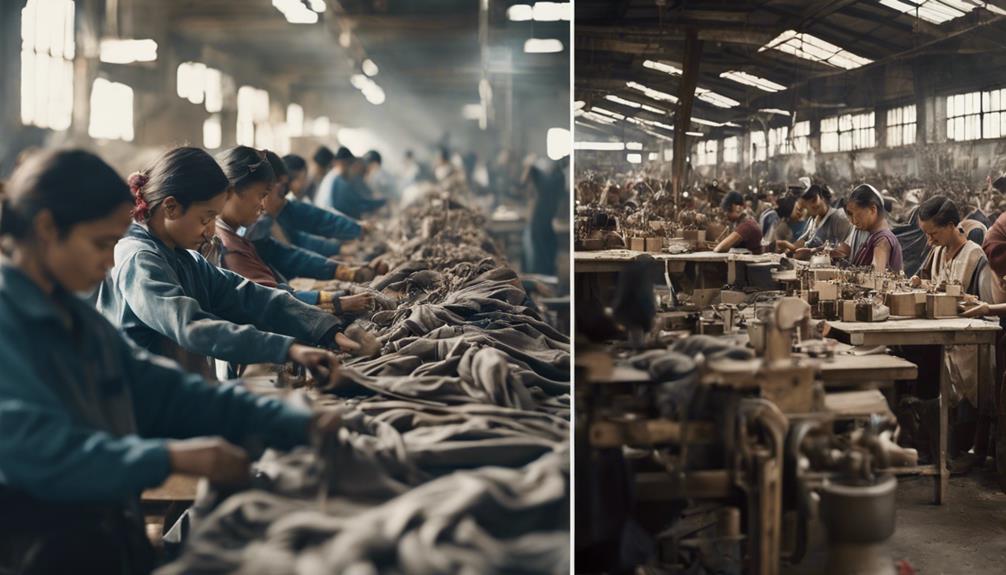
Sustainable fashion's commitment to ethical labor practices stands in stark contrast to the exploitative conditions faced by many garment workers worldwide. Currently, only 2% of garment workers earn a living wage, with the recent legal minimum in Bangladesh set at just $113 per month after intense protests. Fast fashion brands typically allocate around 70% of their garment costs to fabric, leaving little for wages. In contrast, ethical brands prioritize fair wages that often exceed legal requirements, making their products more expensive.
The Fashion Transparency Index 2023 highlights a troubling reality: 99% of fashion brands lack wage disclosure, exposing a significant lack of transparency surrounding labor practices. This lack of accountability allows brands to profit while approximately 1.5 million garment workers in Turkey live in poverty.
Sustainable brands actively avoid these exploitative practices, ensuring ethical treatment and safe working conditions for all workers. By choosing sustainable fashion, you're not just investing in quality; you're also supporting a movement that champions fair wages and humane labor practices, paving the way for a more equitable industry. Your choices can make a difference in the lives of garment workers around the globe.
Quality Vs. Quantity in Materials
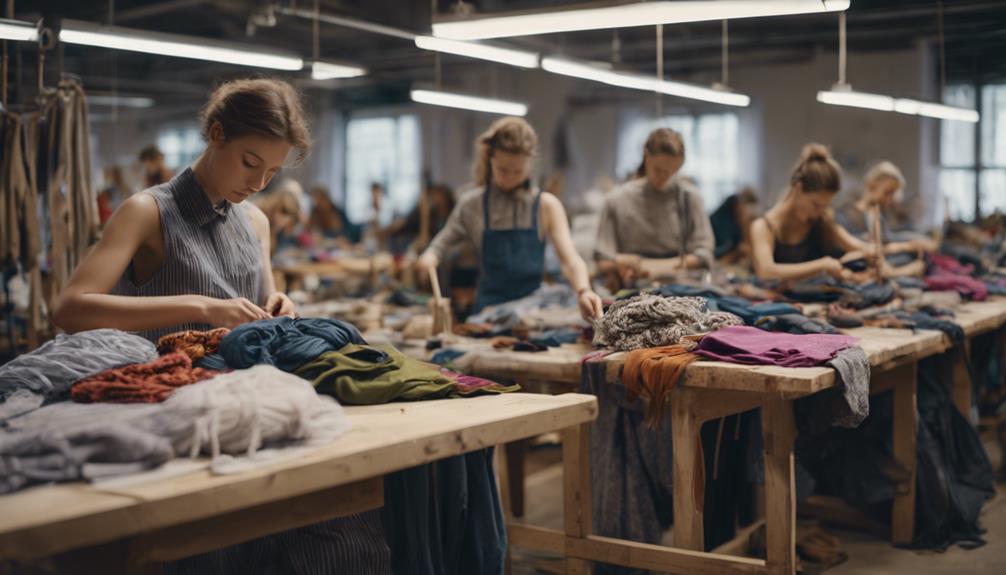
When you choose sustainable fashion, you're prioritizing durable materials over the sheer number of items in your closet.
Investing in higher-quality garments may seem costly upfront, but the cost per wear analysis shows you'll save money in the long run.
Durable Materials Matter
Investing in durable materials not only enhances the longevity of your clothing but also reduces the overall costs associated with frequent replacements. When you choose eco-friendly clothing made from high-quality fibers like organic cotton, you're not just making a fashion statement; you're also opting for sustainability. These materials may come with a higher upfront cost, but they appreciably extend your clothing lifespan, making them a wise investment.
Here's a quick comparison of materials:
| Material Type | Durability | Cost Implication |
|---|---|---|
| Organic Cotton | High | Higher initial cost |
| Polyester | Low | Lower initial cost |
| Recycled Fabrics | Medium | Moderate cost |
Cost Per Wear Analysis
Understanding the cost per wear of your clothing can help you weigh the benefits of quality materials against the allure of cheaper, fast-fashion alternatives.
While sustainable clothes might seem pricier upfront, their durability often leads to a much lower cost per wear. Consider these points when evaluating your wardrobe:
- Quality Over Quantity: Investing in high-quality garments means you won't have to replace them as often, reducing the overall cost of making your wardrobe effective.
- Long-Term Savings: A sustainable piece may cost $100 but could last five years, translating to just $0.05 per wear. In contrast, a $20 fast fashion item might only last a season, ending up at $0.40 per wear.
- Mindful Consumption: Choosing sustainable options encourages a shift away from fast fashion, promoting smarter purchasing habits and less waste.
Ultimately, the cost per wear analysis supports the idea that investing in durable sustainable clothes isn't just an ethical choice, but also a financially savvy one.
Consumer Perception and Behavior
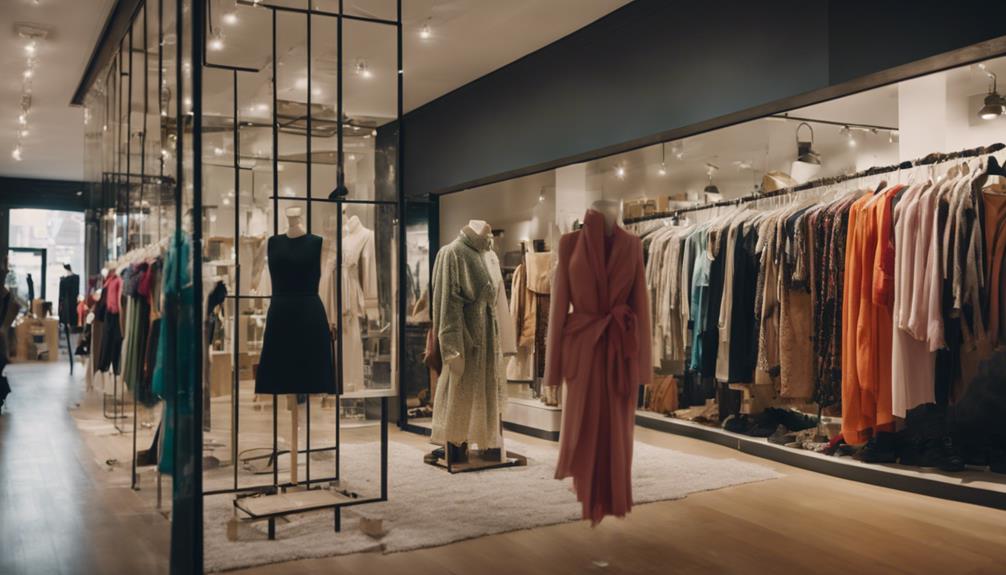
Consumer perceptions often skew towards viewing ethical fashion as prohibitively expensive, even as awareness of its environmental benefits grows. Many shoppers still associate sustainable fashion with higher prices, leading them to favor fast fashion's low-cost options.
However, a significant portion of millennials—71%—prioritize sustainability in their shopping habits, suggesting a shift towards valuing ethical practices over mere affordability.
As you consider your purchasing decisions, it's crucial to recognize the environmental impact of your choices. Fast fashion often leads to wasteful consumption patterns, driven by high return rates from ill-fitting garments. When you opt for ethical brands, you're investing in quality and durability, which ultimately can save you money in the long run.
The growing willingness among younger consumers to pay more for ethical brands indicates a positive trend. By choosing sustainable fashion, you not only support responsible practices but also contribute to a healthier planet.
Education on the consequences of fashion waste fosters informed purchasing decisions, helping you embrace a more sustainable lifestyle. It's time to reconsider your perception and embrace the value of ethical fashion.
The Role of Design in Sustainability

The design of sustainable fashion plays a pivotal role in shaping not just the aesthetic appeal but also the environmental impact of what you wear. When you choose sustainable designs, you're investing in quality and longevity, which can help counteract the pitfalls of fast fashion.
Here are three key aspects of design in sustainable fashion:
- Quality and Durability: Sustainable fashion emphasizes high-quality materials, ensuring garments last longer and reducing the need for replacements. This approach fosters better value over time.
- Eco-Friendly Materials: Designers often use organic cotton and recycled fabrics, which may come with higher production costs but offer significant health and environmental benefits compared to conventional materials.
- Timeless Designs: Sustainable fashion focuses on creating styles that remain relevant across seasons, steering clear of the trend-driven cycles that characterize fast fashion.
Transportation and Environmental Costs

Transporting fashion items contributes considerably to environmental costs, often overshadowing the benefits of sustainable production practices. When you think about the fashion industry's environmental impact, consider that global shipping accounts for about 3% of greenhouse gas emissions. This is significant, especially when you realize that fast fashion relies heavily on long-distance transportation from low-cost labor markets.
Sustainable brands, on the other hand, often prioritize local sourcing and production to minimize their carbon footprints. This helps reduce the environmental impact of their transportation methods. It's startling to learn that shipping a single garment can produce more carbon emissions than making the item itself.
Additionally, transportation not only emits greenhouse gases but also depletes resources, as it relies on fossil fuels and contributes to air and water pollution. Thankfully, many sustainable brands are now adopting practices like carbon offsetting to counterbalance their transportation emissions.
Price Comparisons: Sustainable Vs. Fast Fashion
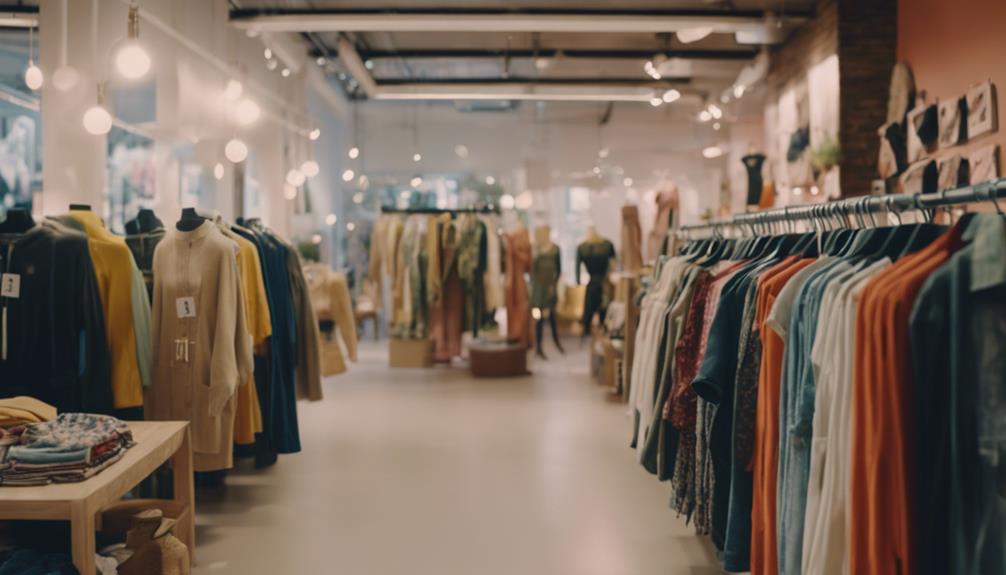
When comparing prices, you'll find that sustainable fashion often comes with a higher upfront cost, reflecting the quality craftsmanship and eco-friendly materials involved. However, it's crucial to reflect on the long-term value and the hidden costs associated with fast fashion. Slow, ethical, sustainable fashion may cost more initially, but it typically lasts longer and reduces the need for constant replacement, ultimately saving you money in the long run. Additionally, supporting brands that prioritize ethical and sustainable practices helps to minimize the negative impact of fast fashion on both the environment and garment workers. By considering the true cost of fashion and investing in slow, ethical, sustainable fashion, you are not only making a sound financial decision but also contributing to a more conscious and responsible global fashion industry.
Here are three key points to keep in mind:
- Durability: Sustainable items are designed to last, meaning you'll spend less over time. Fast fashion garments often wear out quickly, leading to frequent replacements.
- Ethical Practices: Ethical brands prioritize fair labor and sustainable sourcing, which can drive up prices. In contrast, fast fashion brands often exploit low labor costs for higher profit margins.
- Environmental Impact: While fast fashion may seem cheaper, its hidden environmental costs are significant. Supporting sustainable fashion helps reduce waste and promotes a healthier planet.
Ultimately, while sustainable fashion may appear more expensive at first glance, it represents a thoughtful investment in quality and ethics. As consumer awareness grows, many are willing to pay a little extra for ethical brands that align with their values, making sustainability a worthwhile choice.
The Future of Ethical Fashion

As you look to the future of ethical fashion, you'll notice market trends pushing brands to adopt sustainable practices.
Innovations in production are reshaping how clothing is made, making it easier for you to choose eco-friendly options without sacrificing style.
It's clear that the shift towards sustainability isn't just a trend; it's becoming the standard you can expect in the industry.
Market Trends Shaping Sustainability
Sustainable fashion is rapidly evolving, with 71% of consumers now prioritizing eco-friendly practices in their shopping choices, pushing brands to embrace ethical models. This shift is reshaping the industry, encouraging brands to prioritize sustainability in ways that not only appeal to consumers but also reduce the environmental impact.
Here are three key market trends driving this change:
- Consumer Demand: As eco-conscious shoppers seek transparency, brands prioritize ethical production methods, influencing the price of a garment.
- Slow Fashion Movement: Emphasizing quality over quantity, slow fashion encourages consumers to invest in timeless pieces that last longer, ultimately creating a more sustainable wardrobe.
- Collaborations for Impact: More brands are partnering with NGOs to drive awareness and accountability, fostering a culture of sustainability that resonates with consumers.
These trends signal a promising future for sustainable fashion, as brands adapt and innovate to meet the growing demand for ethical choices.
Innovations in Ethical Production
Innovations in ethical production are revolutionizing the fashion industry, making eco-friendly choices more accessible and affordable for everyone.
With advancements in recycled materials, sustainable fabrics are becoming easier to source, driving down production costs. Brands are embracing direct-to-consumer models, which help eliminate wholesale markups and allow you to find ethical fashion at competitive prices.
New technologies like 3D knitting and digital printing are minimizing waste while maintaining high quality, further lowering production costs. Collaborations between brands and NGOs are also fostering sustainable practices, creating shared resources that reduce expenses in ethical production methods.
Additionally, the shift towards circular fashion encourages brands to recycle materials, greatly cutting down waste and lowering overall production costs through reclaimed resources.
As these innovations take hold, you're likely to see a broader range of affordable, stylish options that don't compromise on ethics.
Making Sustainable Choices Affordable

Finding ways to make sustainable fashion choices affordable is essential for encouraging a broader audience to embrace eco-friendly practices. While sustainable fashion often comes with a higher upfront cost, you can find ways to incorporate ethical practices into your wardrobe without breaking the bank.
Here are three strategies to contemplate:
- Thrift Shopping: Explore local thrift stores or online platforms. You can find high-quality pieces at a fraction of the original price, promoting sustainable choices without the hefty cost.
- Clothing Swaps: Organize or participate in clothing swap events. This is a fun way to refresh your wardrobe, exchange items with friends, and adopt a more sustainable approach.
- Invest in Timeless Pieces: Focus on brands that offer timeless designs and made-to-order options. These garments often have a lower cost per wear and reflect quality craftsmanship, making them more affordable in the long run.
As competition in sustainable fashion grows, you'll see a wider range of price points, making it easier to choose ethical practices while staying within budget. Embrace these options, and you'll find sustainable choices can be both affordable and stylish!
Frequently Asked Questions
Is Sustainable Clothing More Expensive?
You might find sustainable clothing pricier due to its quality materials and ethical production. However, investing in durable pieces can save you money over time, as they last longer than fast fashion alternatives that quickly wear out.
Will Consumers Pay More for Sustainable Fashion?
Many consumers are willing to pay more for sustainable fashion, recognizing its value. As awareness grows, you might find that ethical brands are becoming more accessible, offering various price points to suit different budgets.
How Much Cheaper Is Fast Fashion Than Sustainable Fashion?
Fast fashion can be up to 70% cheaper than sustainable options. While you might save money upfront, consider the quality and longevity of your purchases; sustainable fashion often offers better value over time.
Is Sustainable Fashion for the Rich?
Sustainable fashion isn't just for the rich. You'll find affordable ethical brands, thrift shops, and clothing swaps, making it accessible. More people prioritize sustainability, proving you can embrace style and ethics without breaking the bank.
Conclusion
In the tapestry of fashion, sustainability weaves a complex thread that often seems pricier.
But remember, investing in quality over quantity can illuminate your wardrobe with lasting brilliance.
By choosing ethical options, you're not just adorning yourself; you're making a statement that echoes through the fabric of our planet.
So, don't shy away from sustainable choices—they may surprise you with their value, ultimately leading you towards a more conscious and fulfilling style journey.
